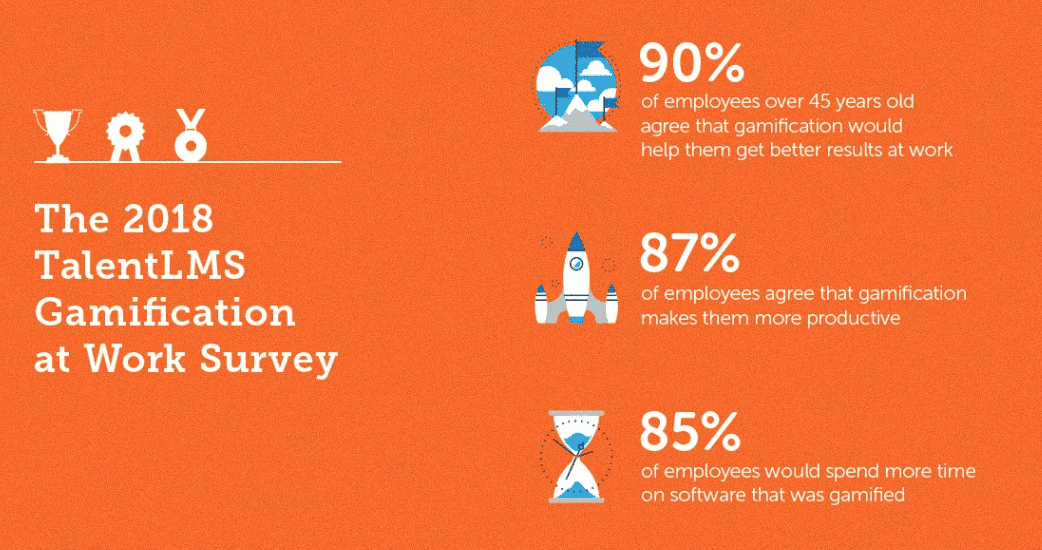How founders can build a great company culture
How do you think your employees feel about their work? Do they take pride in it? Or do they wake up Monday to Friday filled with dread?
Manage your equity and shareholders
Share schemes & options
Equity management
Migrate to Vestd
Company valuations
Fundraising
Launch funds, evalute deals & invest
Special Purpose Vehicles (SPV)
Manage your portfolio
Model future scenarios
Powerful tools and five-star support
Employee share schemes
Predictable pricing and no hidden charges
For startups
For scaleups & SMEs
For larger companies
Ideas, insight and tools to help you grow

Gamification in the office isn’t about letting your staff play PUBG at their desks. The concept is pretty new but there are plenty of academics researching it, and even more companies buying into the idea.
The theory behind gamification is to make work intrinsically rewarding, so your staff actually enjoy what they do for the sake of it, rather than extrinsically rewarding where they just do it for the money.
The idea of gamification is to take elements normally associated with computer games and bring them to non-gaming settings.
Non-game situations are when there is no set outcome - no win or lose at the end of the game - so hire or not to hire situations are a bit of a grey area.
It’s got more popular for consumers in the last few years, such as GiffGaff awarding points to customers interacting in communities and promoting the network, and Facebook have got in on the game with their ‘Top Fan’ badges.
So how can traditional gaming ideas come into the workplace? Some features that you can consider include:
These things can easily be introduced into computer-based training programmes, or you can choose to work them into the very fibre of how your office functions.
The crux of gamification is to increase how engaged your staff are at their job. When it’s your company, you know what you’re out to achieve. If you’re lucky, your business is your passion and you’ve made what you love into a thriving organisation. Realistically, your admin staff, finance department, and cleaners probably aren’t as consumed with the company as you are.
By tapping into the joy people feel playing games, and putting some of that structure into your office, you should see an increase in engagement.
The theory goes that gaming taps into three key human needs:
Theoretically, gamifying your office should bring about the same levels of engagement as Angry Birds. As humans, we all want to succeed and this is the instinct that gamification plays on.
Most workplaces will have a decent chunk of staff under 40 years old. Look at how many of your staff fit in that bracket; they’re the ones who have been raised on computer games. They understand level-ups, progress and health bars, getting to the top of a leaderboard. If it keeps them going back to their phones for more screen time, it should keep them happy in their jobs too.
First of all, not everyone does like games. Having a leaderboard for points earned could be very demotivating if there is little movement between the weekly rankings, or if the ‘game’ seems too simple for some of your employees.
Another pitfall is whether a gamification drive in the workplace will actually bring about a long-term culture change with more engagement and productivity. The results might seem quick and positive, but you need to take into account the novelty factor and make sure things stay fresh.
Some of the workers might also take the introduction of levels, rankings, and leaderboards as a concern. You need to be careful to deliver the message behind gamification carefully otherwise staff might think their job is in jeopardy if they don’t get a certain amount of points or earn a certain badge.
By asking your staff the type of gaming they want to see you can increase their levels of engagement, according to a study done at Wharton Business School.
Another survey of 400 US professionals by TalentLMS revealed that there are plenty of other benefits to gamifying the workplace, including increasing productivity and improving results.

On that note, you need to decide how serious you want gamification to be. Is it purely a bit of fun? A means to decide who gets rewards and incentives? Will everyone’s performance affect their annual reviews and promotion prospects? You need to strike a balance to getting your staff to buy-in without making them feel insecure in their role.
Every business is different, so implementing gamification isn’t going to be one size fits all. There are a lot of models that you can try and the best approach is to talk to your staff to make sure they’re on board with it.
There are simple ways that you can gamify your team, such as assigning points to KPIs to produce leaderboards and setting social interaction challenges during the onboarding process. However, there are also UK companies that can bring bespoke or off the shelf solutions to your business.
Some examples of gamification companies in the UK include…
As Pete Jenkins, CEO of Gamification+, says:
“Gamification needs to be done well to achieve any benefits… choosing the right partners to work with to create truly immersive and effective gaming experiences is really important.”
If you want to bring in an outside company, be clear what you want to achieve with your gamification so that they can help you build an effective workplace.
It’s a fine line between gamification and making your workplace overly competitive. Be aware that not everyone is going to react in the same way to you introducing gaming elements into the office. Make sure that you engage with your workers so that they understand the reasons behind the shift in culture.
By tapping into the bigger reasons your team walk through the door every day you will see an increase in engagement as you make their work intrinsic to their needs.
Once you’ve harnessed the natural desire to succeed an increase in productivity won’t be far behind.

How do you think your employees feel about their work? Do they take pride in it? Or do they wake up Monday to Friday filled with dread?

Autonomy isn’t a perk. It’s a powerful tool for performance, satisfaction, and retention.

Taking your IT services into the cloud can have some great benefits for growing companies, by keeping your costs low and your tech nimble.